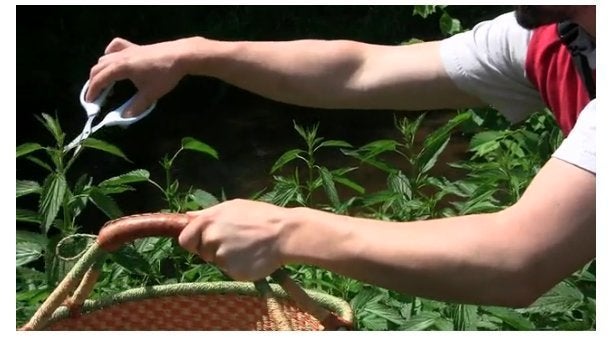
More and more consumers and corporations are touting the benefits of "local" foods, often described as "sustainable," "healthy," or "natural." According to the trade publication, Sustainable Food News, local as a marketing claim has grown by 15 percent from 2009 to 2010, and it's likely that number will increase in the coming year.
But, beyond the greenwashing and co-opting of the term by Wal-Mart, what does "local" food and farming really mean? What is the impact of non-organic local food and farming on public health, nutrition, biodiversity, and climate?
Jessica Prentice coined the term locavore for World Environment Day in 2005 to promote local eating, and local consumption in general. Her goal was to challenge people to obtain as much food as possible from within a one hundred mile radius. Her success was more than she imagined. In 2007 the New Oxford American Dictionary selected "locavore" as its word of the year. Local had arrived!
Some chemical farmers claim that local is better than organic, because it stimulates the local economy and reduces the distance (food miles) that food travels between the farm or feedlot and your table. But does so-called local farming, utilizing toxic pesticides, GMO seeds and feed, chemical fertilizers, and animal drugs mean that the food is safe and sustainable? Obviously not.
We believe that there shouldn't have to be a choice between local and safe organic; but rather that consumers should look for food that is not only local or regionally produced, but food that is also organic and therefore safe and sustainable. Organic and local is the new gold standard!
The locavore phenomenon brings up several important concerns including: food miles, chemically grown food, greenhouse gas emissions, factory farming, genetically engineered animal feed, and the value of organic labeling. All of these crucial issues relate to the central question: what should be in your market basket?
Does Local Mean Safe?
Chemically grown foods produced locally may be cheaper than organic and may aid the local economy but they pollute the ground water, kill the soil food web, broadcast pesticides into the air, poison farmworkers, and incrementally poison consumers with toxic residues on their foods. "Local" pesticides, genetically modified organisms (GMOs), and chemical fertilizers are just as poisonous as those used in California, Mexico, Chile, or China.
Does "Pesticide Free" Mean Safe or Sustainable?
Often, growers at farmers markets will say, "I don't use pesticides, I only use chemical fertilizers." Sadly, what many people do not realize is that chemical fertilizers are extremely hazardous. A high percentage of these fertilizers seep into our wells and municipal drinking water, or else run off into our streams, rivers, and finally end up in the ocean. Two-thirds of the nation's drinking water is contaminated with hazardous levels of nitrogen fertilizer. High nitrogen and phosphorous levels in rivers and oceans kill fish and other marine wildlife.
"Local" Factory Farms and CAFOs: Destroying Public Health and Climate Stability
According to Wal-Mart and Food Inc.'s definition of local (anything produced within a 400-mile radius), meat, dairy, and eggs, reared on a diet of GMO grains, slaughterhouse waste, and antibiotics, qualify as "local." According to the USDA, the majority of the nation's non-organic meat, dairy and eggs are now produced on massive factory farms, euphemistically called Confined Animal Feeding Operations (CAFOs). CAFOs are typically overcrowded, filthy, disease ridden, and inhumane, not only for the hapless animals imprisoned inside their walls, but also for the typically non-union, exploited, immigrant workers who toil in these hellish facilities.
And where does methane pollution come from? Mainly from factory farms and the overproduction of non-organic meat, dairy, and eggs.
Food Miles and Greenhouse Gas Emissions
Food miles are the average miles that food travels from the farm to the consumer. Since more than 80% of the U.S. grocery purchases are now processed foods, a huge percentage of the carbon or fossil fuel footprint of industrial agriculture comes from transporting factory farm crops or animals to the processing plant or slaughterhouse and then transporting these processed foods from the processing plant to the dinner table via the supermarket. By reducing the processed foods in our diet we can greatly reduce the food miles or carbon footprint for which our households are responsible, since the shorter the distance food travels, the lower the greenhouse gas emissions.
"Fresh food miles" indeed contribute to the high CO2 emissions from the U.S. food system, but these whole foods are certainly not the major greenhouse gas contributor in our food system. That dubious honor belongs to factory-farmed meat, eggs, and milk, which generate 30 to 50% of all of the U.S. greenhouse gasses, more than industry and fossil fuels combined.
Chemical and Local versus Organic and Local
If they are talking about comparing supermarket fresh organic with fresh chemically grown local, we should still choose supermarket organic, because, whether they are used locally or nationally, pesticides and fertilizers are more dangerous and deadly to your health and the health of the environment than chemically-free organic foods transported from outside your local region.
The Gold Standard: Local and Organic
Local organic food and farming are the gold standard. Organic farmers gladly adhere to a set of regulations, use non-toxic products, and accept the need to be scrutinized by an independent third party inspector.
There are no regulations governing "local" chemically grown or GMO-derived food. When the local chemical grower tells you that local is better than organic, tell them that they should switch to organic so that you can trust their food to be safe, clean, inspected, and environmentally friendly. Local-organic is the gold standard.